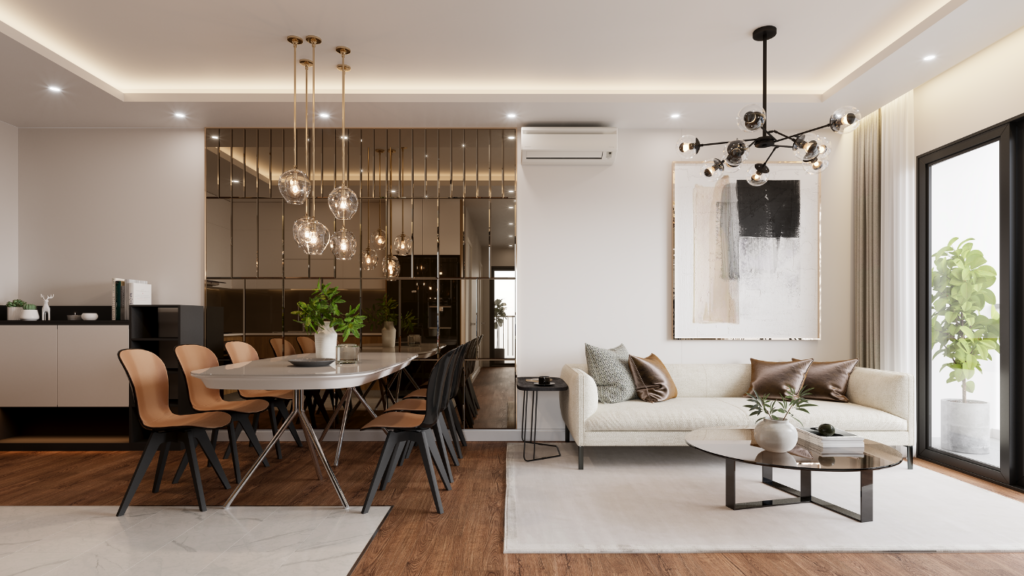Why Choose Interior Design After 12th?
Interior design courses are a great pick for creative minds finishing 12th grade. They teach you to design beautiful, functional spaces, from cozy homes to sleek offices. In 2025, with India’s real estate and hospitality sectors booming, designers are in high demand. These courses, lasting one to four years, offer hands-on training in sketching, 3D modeling, and project management. They’re quicker than many degrees, letting you start working sooner. Affordable fees, especially at government institutes, make them accessible. You’ll gain skills for a career that blends art and business, with opportunities to work for firms or start your own studio in a growing market.
Types of Interior Design Courses
After 12th, you can choose from diplomas, bachelor’s degrees, or certificate courses in interior design. Diplomas (1–2 years) focus on practical skills like drafting and software. Bachelor’s degrees (3–4 years), like B.Des or B.Sc., dive deeper into theory and trends. Certificate courses (6–12 months) teach specific skills, like 3D rendering. In 2025, institutes offer flexible options, including online programs. Each type suits different goals—diplomas for quick entry, degrees for long-term growth. Pick based on your time, budget, and career plans.
Diploma Courses
Diploma courses in interior design, lasting 1–2 years, are perfect for quick career starts. They cover basics like space planning, color theory, and software like AutoCAD. In 2025, institutes like INIFD and JD Institute offer diplomas costing ₹1–3 lakh. You’ll work on real projects, building a portfolio. Graduates can join design firms or freelance, earning ₹3–5 lakh yearly. These courses suit students eager to work fast or those balancing studies with jobs.
Bachelor’s Degree Courses
Bachelor’s degrees, like B.Des or B.Sc. in Interior Design, take 3–4 years and offer in-depth training. They include subjects like architecture history, lighting, and sustainable design. In 2025, colleges like NIFT and CEPT University charge ₹5–10 lakh total. These programs prepare you for senior roles, with starting salaries of ₹5–8 lakh. They’re ideal for students wanting a strong foundation and opportunities in big firms or abroad.
Certificate Courses
Certificate courses, lasting 6–12 months, focus on specific skills like 3D modeling or Vastu design. Offered by institutes like Arch Academy, they cost ₹50,000–₹1.5 lakh in 2025. These short programs are great for adding skills to a diploma or degree. You’ll learn tools like SketchUp or trends like eco-friendly design. They suit working professionals or students seeking quick, affordable ways to boost their resumes.
Skills You’ll Learn
Interior design courses teach a mix of creative and technical skills. You’ll master sketching, color coordination, and space planning to create stunning interiors. Software like AutoCAD, 3D Max, and Revit helps design virtual models. You’ll learn project management, budgeting, and client communication for real-world jobs. In 2025, courses emphasize trends like sustainable materials and smart homes. Practical projects, like designing a model room, build your portfolio. These skills prepare you to work with architects, clients, or your own design firm.
Creative Design Skills
Creative skills are the heart of interior design. Courses teach you to pick colors, textures, and furniture that match a client’s style. You’ll learn to sketch layouts and visualize spaces. In 2025, trends like minimalism and biophilic design are key. Projects, like redesigning a cafe, sharpen your creativity. These skills help you craft unique, eye-catching interiors that stand out in a competitive market.
Technical and Software Skills
Technical skills include using software to create 3D models and blueprints. Tools like AutoCAD and SketchUp are industry standards. In 2025, courses teach Revit for smart home designs. You’ll also learn measurements, lighting plans, and material selection. Hands-on labs ensure you’re job-ready. These skills let you turn creative ideas into practical plans, impressing clients and employers in design firms.
Top Institutes Offering Courses
India has many reputed institutes for interior design after 12th. National Institute of Design (NID) in Ahmedabad offers top-tier B.Des programs. INIFD in Mumbai provides affordable diplomas with industry tie-ups. CEPT University in Gujarat is known for its architecture-focused degrees. In 2025, online platforms like Arch Academy offer flexible certificates. Check for accreditation, faculty experience, and placement records. Visiting campuses or reading alumni reviews helps you pick a school that fits your goals and budget.
Government vs. Private Institutes
Government institutes like NID and CEPT offer quality education at lower fees (₹2–5 lakh total). They have strong faculty and industry links. Private institutes like INIFD and Pearl Academy charge ₹3–10 lakh but offer modern labs and global exposure. In 2025, government schools suit budget-conscious students, while private ones provide networking and digital tools. Compare facilities and placements to choose the best fit.
Online Learning Options
Online interior design courses are growing in 2025. Platforms like Arch Academy and Udemy offer certificates and diplomas for ₹50,000–₹2 lakh. They teach software, design principles, and trends through videos and projects. Online programs suit students with busy schedules or those far from cities. However, they may lack hands-on practice. Ensure the course includes portfolio-building and is recognized by employers.
Career Opportunities After Courses
Interior design courses open diverse career paths. You can work as a residential or commercial designer, earning ₹3–8 lakh yearly in 2025. Roles like 3D visualizer or furniture designer are also popular. Freelancing for clients or starting a studio offers flexibility. Big firms like Godrej Interio hire graduates, while hospitality and real estate sectors need designers. With experience, you could earn ₹15 lakh or more, making it a lucrative field.
Job Roles and Salaries
Entry-level roles include junior designer or CAD specialist, paying ₹3–5 lakh annually. Senior designers or project managers earn ₹8–15 lakh. In 2025, niche roles like sustainable design consultants are in demand, offering ₹6–10 lakh. Freelancers charge ₹50,000–₹2 lakh per project. Salaries vary by city—Mumbai and Delhi pay more. With a strong portfolio, you can land high-paying jobs in top firms.
Freelancing and Entrepreneurship
Freelancing is a great option after interior design courses. You can design homes or cafes, charging per project. In 2025, platforms like UrbanClap connect freelancers with clients. Starting a design studio is another path, with initial costs of ₹5–10 lakh. Successful entrepreneurs earn ₹20 lakh yearly. Building a brand through Instagram and client referrals boosts your freelance or business growth.
Benefits of Interior Design Courses
These courses offer many advantages. They’re shorter than traditional degrees, letting you work by age 20. Practical training builds real-world skills, from sketching to client pitches. In 2025, the industry’s 15% growth ensures jobs. Courses are creative, letting you express your style while earning well. Flexible options, like online or part-time study, suit different needs. With India’s urban boom, your skills will always be needed, promising a stable, exciting career.
Quick Career Start
Diplomas and certificates let you start working within 1–2 years, faster than a 4-year degree. In 2025, firms hire freshers for junior roles, paying ₹3–5 lakh. You can freelance while studying further, gaining experience early. This quick start builds your portfolio and confidence, giving you an edge in the competitive design market.
Creative Freedom
Interior design lets you blend art and function. Courses encourage you to experiment with colors, layouts, and trends. In 2025, designing eco-friendly or smart homes offers creative challenges. Whether working for a firm or clients, you’ll have room to innovate. This freedom makes the career fulfilling for those who love aesthetics and problem-solving.
Challenges in the Field
Interior design isn’t without hurdles. Competition is high, with thousands graduating yearly. Starting salaries can be low, around ₹3 lakh, requiring patience. Client demands and tight deadlines add pressure. Keeping up with trends, like smart tech, means constant learning. In 2025, building a unique style and networking are key to standing out. With hard work, these challenges can lead to a rewarding career.
Competition and Networking
The design field is crowded, especially in cities like Mumbai. In 2025, a strong portfolio and social media presence help you stand out. Networking at industry events or via LinkedIn connects you with clients and firms. Internships during courses build contacts. Staying persistent and showcasing your unique style can beat competition in this creative industry.
Continuous Learning
Design trends evolve fast. In 2025, skills like AI-driven design or sustainable materials are in demand. Courses teach basics, but you must learn new tools like Lumion through workshops. Reading design blogs or attending seminars keeps you updated. This ongoing effort ensures your work stays fresh and competitive, appealing to modern clients and employers.
How to Choose the Right Course
Picking the right course depends on your goals, budget, and interests. Research institutes for accreditation and placement records. Check if the curriculum covers software and trends like eco-design. Visit campuses or talk to alumni for insights. In 2025, consider course duration—diplomas for quick starts, degrees for depth. Online options suit flexibility, but ensure they include projects. A good course aligns with your career dreams and prepares you for the industry.
Assessing Your Interests
Think about what you love in design. If you enjoy home decor, residential design courses are ideal. If offices excite you, pick commercial-focused programs. In 2025, niche areas like sustainable design are popular. Take quizzes or intern at a firm to confirm your passion. Matching your course to your interests keeps you motivated and successful.
Budget and Location
Course fees vary—government institutes charge ₹2–5 lakh, private ones ₹5–10 lakh. In 2025, scholarships at NID or CEPT help. Location matters; Mumbai and Delhi offer industry exposure but higher costs. Online courses save money but may lack practical training. Weigh your budget and career goals to pick a course that’s affordable and effective.
Conclusion
Interior design courses after 12th open doors to a creative, growing career in 2025. From diplomas to degrees, they teach skills like designing and software, preparing you for jobs or freelancing. With India’s interior market booming, graduates are in demand. Top institutes like NID and INIFD offer quality training. Despite challenges like competition, the rewards—creative freedom and good pay—make it worthwhile. Choose a course that fits your passion and budget, and you’ll be ready to shape beautiful spaces in no time.



